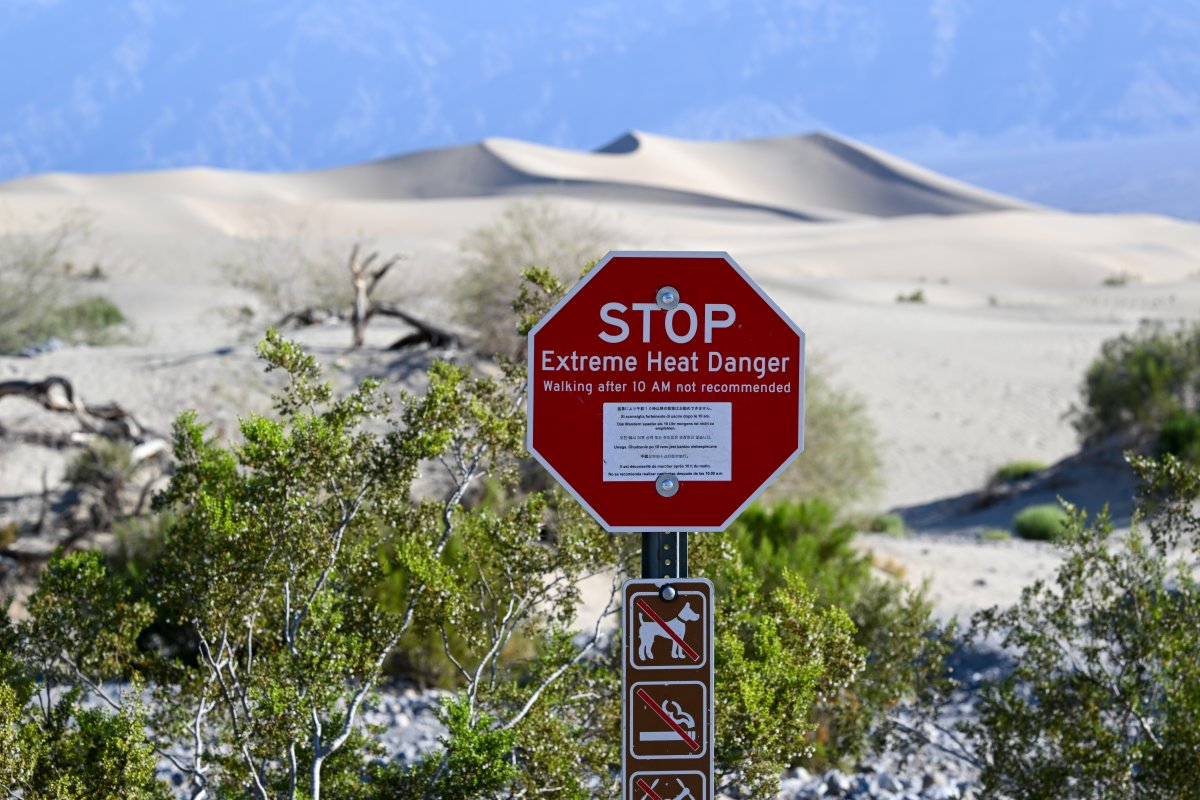Tourist rescued from Death Valley after
skin ‘melted off’ foot in extreme heat

The tourist, a 42-year-old man from Belgium, was taking a walk on the Mesquite Flat Sand Dunes when he lost his flip-flops.
“People think it’s going to be like the beach where you can get out there with flip-flops or sandals, but because of the extreme temperatures, those dunes heat up just as much as the pavement does,” Death Valley National Park Service ranger Gia Ponce said in an interview with the Los Angeles Times.
The air temperature that day, July 20, was upwards of 50 C, park officials wrote in their release. That’s already scorching, but the temperature of the sand dunes themselves “would have been much hotter” than the air temperature.
“The ground can be much hotter — 170, 180 (F). Sometimes up into the 200 range,” Ponce said. In Celsius, that temperature range is around 76 to 93 degrees.
After losing his flip-flops, the tourist would have been in excruciating pain trying to walk out of the sand dunes. The man’s family ended up calling for help and recruiting other park visitors to help carry him out to the parking lot.
“The skin was melted off his foot,” Ponce said.
When park rangers arrived, they had challenges communicating with the Belgian man and his family but it was clear the tourist needed to be “transported to a hospital quickly due to his burns and pain level,” officials wrote.
Unfortunately, rangers weren’t able to airlift the man because helicopters can’t generate enough lift to fly in extreme heat due to the air being less dense. In the end, he was loaded into an ambulance and driven to a helicopter pad at a higher elevation where the air temperature was a cooler 42 C.
A Mercy Air helicopter transported the man to University Medical Center in Las Vegas.
The man suffered third-degree burns, sometimes called full-thickness burns, because these wounds destroy all layers of the skin, the epidermis and the dermis, and can also damage one’s underlying bones, muscles and tendons.
Third-degree burns often require skin grafts to replace the damaged tissue with healthy skin from another part of the victim’s body.
Officials did not give an update on the man’s condition after he was taken to the hospital.
It’s unclear if the man lost his flip-flops in the sand or if they broke. Rangers were unable to determine details due to the language barrier.
Death Valley rangers recommend that travellers coming in the hot summer months always stay within a 10-minute walk of an air-conditioned vehicle, drink plenty of water, eat salty snacks, wear a hat and sunscreen and not hike after 10 a.m. to stay out of the afternoon sun.






